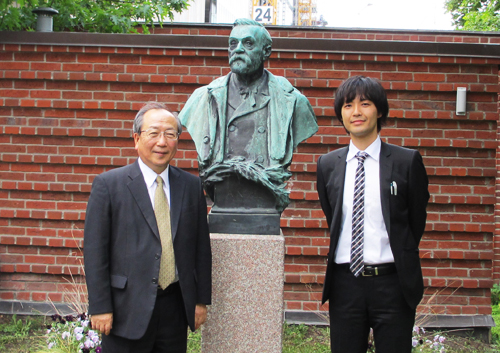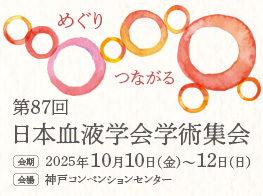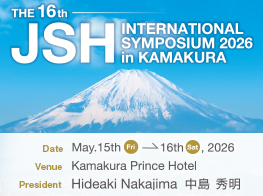
名前:山岸 誠【東京大学大学院 新領域創成科学研究科 メディカルゲノム専攻 渡邉研究室 】
発表日時:2013年6月16日
発表形式:Oral
Title:
Epigenetic deregulation of miRNA in malignant lymphomas
Authors:
Makoto Yamagishi1, Kazumi Nakano1, Harutaka Katano2, Atae Utsunomiya3, Yasunori Ota4, Tsunekazu Hishima5, Seiji Okada6, Kazunari Yamaguchi7, Kaoru Uchimaru8, Seishi Ogawa9, Toshiki Watanabe1
Affiliations:
1. Graduate School of Frontier Sciences, The University of Tokyo, Japan
2. Department of Pathology, National Institute of Infectious Disease, Japan
3. Department of Hematology, Imamura Bun-in Hospital, Japan
4. Department of Pathology, Toranomon Hospital, Japan
5. Department of Pathology, Tokyo Metropolitan Cancer and Infectious Diseases Center
Komagome Hospital, Japan
6. Center for AIDS Research, Kumamoto University, Japan
7. Department of Safety Research on Blood and Biologics, National Institute of Infectious
Disease, Japan
8. Institute of Medical Science, The University of Tokyo, Japan
9. Faculty of Medicine, The University of Tokyo, Japan
Abstract:
Background
One of the most significant recent advances in biomedical research has been the discovery of the 22-nt-long class of non-coding RNA designated miRNA. The miRNAs are pleiotropic molecules that can regulate multiple genes expression and consequently control cell fate. miRNA imbalance is observed in the pathogenesis of a range of diseases including lymphomas, in which survival and proliferation signaling cascades are abnormally sustained. It is now unclear how miRNAs regulate lymphoma-specific signaling activation.
Aims
Elucidation of miRNA signature and its functional involvement in malignant lymphomas.
Methods
By integrated analyses of primary adult T-cell leukemia (ATL) cells, we uncovered unique molecular characteristics that include profiles of mRNA expression, DNA copy number, and miRNA signature. In addition, we also addressed miRNA abnormality and its functional roles in diffuse large B-cell lymphoma (DLBCL).
Results
Although crucial roles of miRNA in cancers have begun to emerge, detailed studies with ATL patients have not been achieved. Using 40 primary ATL samples and 22 samples of normal CD4+ T cells, we determined the ATL miRNA signature, i.e., all ATL samples showed abnormal downregulated miRNA expression (Yamagishi et al., Cancer Cell, 2012). Especially, microarray and qRT-PCR revealed drastic loss of miR-31, which has been reported as a metastasis-associated miRNA in breast cancer. Given that all ATL cases invariably showed undetectable or very low level of miR-31, the loss of miR-31 appears to be involved in ATL development.
As a novel miR-31 target gene, we identified NF-κB inducing kinase (NIK) that plays central roles in noncanonical signaling and constitutive activation of NF-κB pathway in various cancers, including malignant lymphomas. Restoration of miR-31 decreased the levels of NIK expression and NF-κB activity, resulting in reduction of malignant phenotypes, including proliferative index, anti-apoptosis, and chemotaxis in ATL cells. Furthermore, lentivirus-introduced miR-31 could induce strong apoptosis in primary tumors freshly isolated from ATL patients, clearly indicating pivotal functions of miR-31 as a tumor suppressor.
We also found that genetic loss and polycomb-mediated epigenetic deregulation directly involve in the silencing of miR-31. Knockdown of polycomb repressive complex restored the miR-31 expression and consequently inhibited NIK-dependent NF-κB cascade, leading to strong apoptosis in ATL cell lines as well as in primary patient samples. These findings illustrated that genetic and epigenetic abnormalities link to NF-κB activation through the loss of miR-31. Of note, we and other research groups have demonstrated that this novel molecular interconnection is well conserved in other cancers such as breast and prostate cancers, melanoma, and B cell lymphomas, in which polycomb and NF-κB are both activated. Thus, miR-31 downregulation appears to be one of the crucial molecular hallmarks of cancers.
By comprehensive analysis of primary DLBCL samples and in vitro experiments, we also discovered specific miRNAs downregulation in DLBCL. We show that epigenetic silencing of some miRNAs contributes to chronic signaling activation and cell proliferation in B cell lymphoma cells.
Summary
Considering aberrant epigenomics associated with cancers, the emerging relationship provides us a conceptual advance in understanding the broad-acting oncogenic signaling and molecular hallmarks of malignant lymphomas.
参加レポート:
この度、日本血液学会のトラベルアワードに選出していただき、スウェーデンのストックホルムで開催されたEHA 18th congressにて研究発表をさせて頂きました。6月のストックホルムは非常に過ごしやすい気候で、また日照時間も長く楽しい旅になりました。
学会はセントラル駅から電車で10分程度の郊外にある大きな会場で行われ、複数の発表会場と企業ブースも含め盛大に行われました。私はこのような大きな国際学会への参加は初めてであり、会の規模と環境に圧倒されましたが、様々な国からの研究者が集いとても雰囲気の良い集会でした。プログラムは特に教育講演が充実しており、臨床医や研究者を育成する姿勢が強く現れていました。また会場スペースや各セッション間の時間にも余裕があり、最新の研究成果を学ぶにあたり非常に良い環境でした。
私はこれまでに成人T細胞白血病(ATL)における大規模な網羅的解析及びmiRNAとエピジェネティクスに関する基礎研究に従事し、現在はB細胞リンパ腫についても同様の解析を進めています。本学会ではmiRNAの発現異常の発見から見えたリンパ腫のBiologyをまとめ、口頭で発表しました。NON-HODGKIN LYMPHOMA - BIOLOGYのセッションは全体の規模からすると参加者は少人数でしたが、非常に熱心な基礎研究者が多い印象でした。私の発表後、すぐに複数の方から貴重な意見や質問をいただき、私にとっても非常に有益な発表となりました。またその後に行われたmiRNAに関するワークショップで、スペインのDr. Pirisが私たちの発表内容をすぐに引用してディスカッションしており、学会での情報共有が研究の進展に重要であることも再認識しました。
今回の学会で特に感じたのは、血液疾患におけるエピジェネティック制御に対する期待と難しさでした。私たちもEZH2の発現異常から起こるmiRNAの脱制御と下流のシグナル伝達系の活性化を明らかにし、DLBCLでも同様の破綻があることを今回発表しました。特にEZH2の発現異常と遺伝子変異はリンパ腫や急性白血病で注目されており、本年度のEHAでも多くの演題で発表されていましたが、そこからの分子レベルの理解と治療を目指した先進的な研究は少なく、基礎研究の必要性を目の当たりにしました。またエピジェネティックシステムへの介入に関する潜在的な有用性と副作用についてしっかりと検証する必要があると感じました。
会期中には、日本血液学会の先生方や事務局の方々、アワードを獲得された他の先生方との食事会にもお招きいただきました。基礎研究に携わる身としては、臨床の先生方から研究内容や学会についてゆっくりお話を伺えたことは大変刺激となり、うれしく思いました。またcongressがストックホルムで行われたこともあり、私の指導者である渡邉俊樹先生のお供をさせていただき、Karolinska Institutetの研究施設や教育システムの見学をさせていただきました。研究所内のノーベル賞事務局前にあるノーベルの胸像の前では記念写真を取りました。異国の地で科学の最先端と歴史に同時に触れることができたことも、研究者の端くれとして大変励みになりました。
EHA congressに参加させていただき、血液研究に対する情熱と最新知識を日本に持ち帰ることができたことが最大の収穫でした。また普段あまり馴染みのない領域について学び、自分の研究の幅を広げることができるのもEHAのような大きな学会に参加する意義であると感じました。このような機会を与えてくださった日本血液学会の事務局及び国際委員会の諸先生方、平素よりご指導頂き、アワードにも推薦して頂きました東京大学大学院新領域創成科学研究科の渡邉俊樹教授、普段より良きアドバイスとサポートをしてくれる渡邉研究室の先生方及び学生の皆様に心より感謝いたします。また最後に、普段より研究生活を支えてくれる妻に心から感謝しています。




